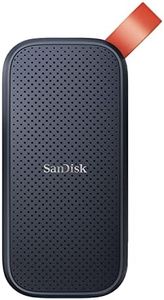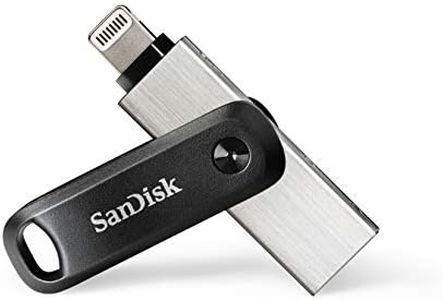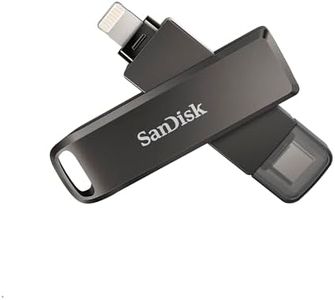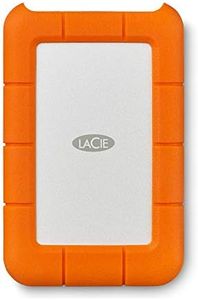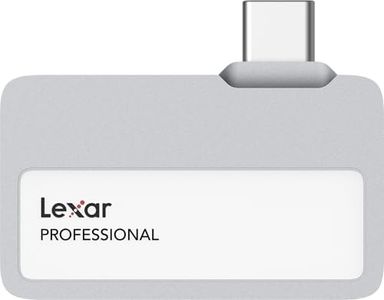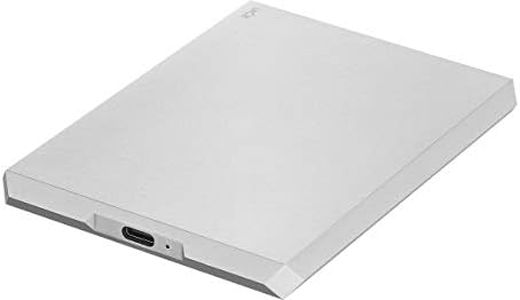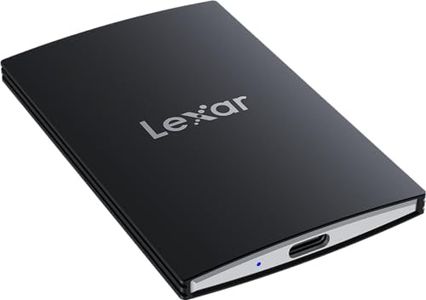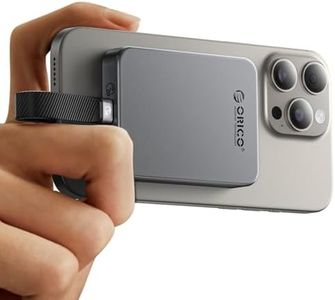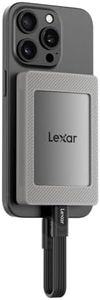We Use CookiesWe use cookies to enhance the security, performance,
functionality and for analytical and promotional activities. By continuing to browse this site you
are agreeing to our privacy policy
10 Best External Storage For Iphone
From leading brands and best sellers available on the web.Buying Guide for the Best External Storage For Iphone
Choosing an external storage device for your iPhone can make your life much easier, especially if you regularly deal with large files, photos, or videos. It's a great way to avoid running out of space on your device and to keep your important files easily accessible. To pick the best fit for you, it's important to understand the different technical features and what they mean in day-to-day use.Storage CapacityStorage capacity refers to how much data the external device can hold, such as photos, videos, music, and documents. This is measured in gigabytes (GB) or terabytes (TB). Small capacities like 32GB or 64GB are good for offloading some photos or media, while 128GB, 256GB, or even higher are better suited for people with large video collections or who work with big projects. To decide, think about the types of files you want to store and how much space these typically require—if you just need a bit of extra room, a lower capacity is enough, but if you regularly shoot high-resolution videos, go for higher storage.
Connection TypeThe connection type is how the external storage physically connects to your iPhone. The most common options are Lightning, USB-C, or wireless. Devices with a Lightning connector plug directly into your iPhone, making them very convenient but limited mostly to Apple devices. USB-C is more future-proof, especially if you have newer devices, but is only compatible with recent iPhones. Wireless options don't require any cable but might be a bit slower and depend on a stable Wi-Fi connection. Your choice should depend on your iPhone's port and whether you value speed and reliability over cable-free convenience.
App CompatibilityExternal storage for iPhones usually needs to work with a companion app that helps you manage files. Some drives require installing and using their own app, while others fully integrate with the Apple Files app for a more seamless experience. If you want hassle-free access and easy file transfers, consider drives that support Files app integration. If you don’t mind using extra apps and features, branded apps may offer more options like backing up your contacts or automatic photo transfers.
Transfer SpeedTransfer speed defines how quickly files can be moved between your iPhone and the external storage. Speeds are usually labeled as USB 2.0, 3.0, or listed directly in megabytes per second (MB/s). Higher speeds (like USB 3.0 or above, or MB/s in the hundreds) mean you can move large videos or lots of pictures much quicker. If you often transfer big files or do backups, go for a device with faster transfer speeds. For occasional use or just storing a few files at a time, speed is less critical.
Portability and Build QualityPortability relates to how easy it is to carry the storage around with you, and build quality covers how sturdy and durable the device is. Slim and lightweight designs are perfect for travel or carrying in a pocket, while rugged or water-resistant drives are ideal if you need protection against drops or the elements. If you move around a lot or want to keep your data extra safe, look for a well-built, compact device.
Backup and Security FeaturesSome external storage devices offer extra features like automatic photo backup or password protection and encryption to keep your data safe from unauthorized access. Backup features can save you a lot of time by automatically copying your new photos and contacts each time you connect the drive. Security options like encryption and password protection are important if you're storing sensitive files. Choose a device with features that match the importance and sensitivity of the data you plan to keep.
